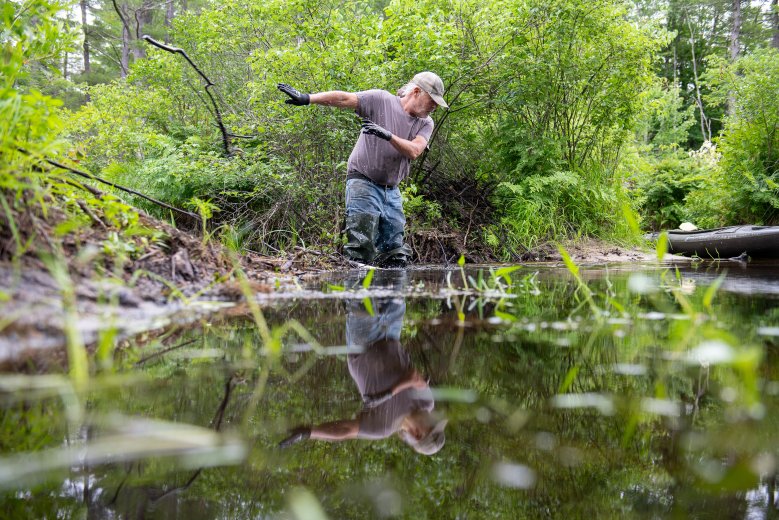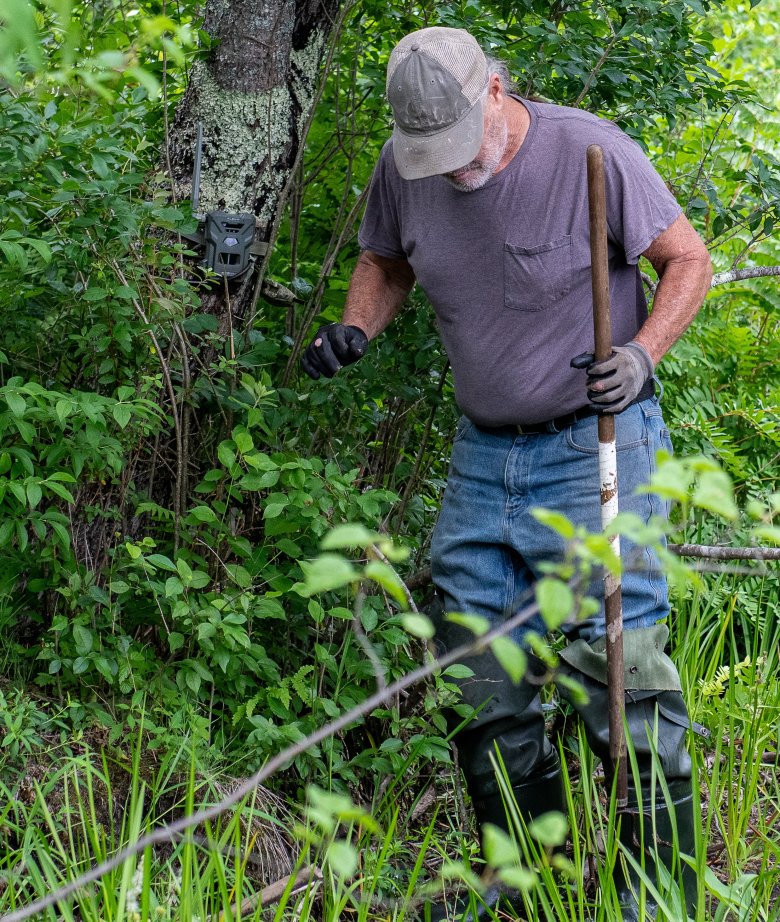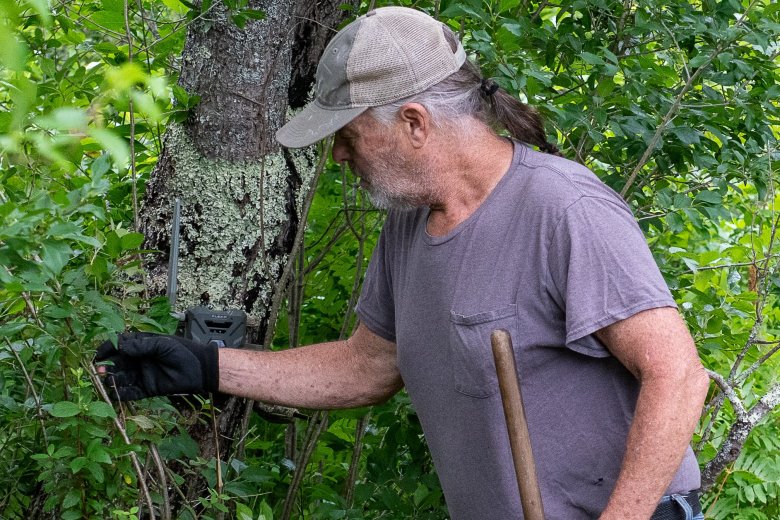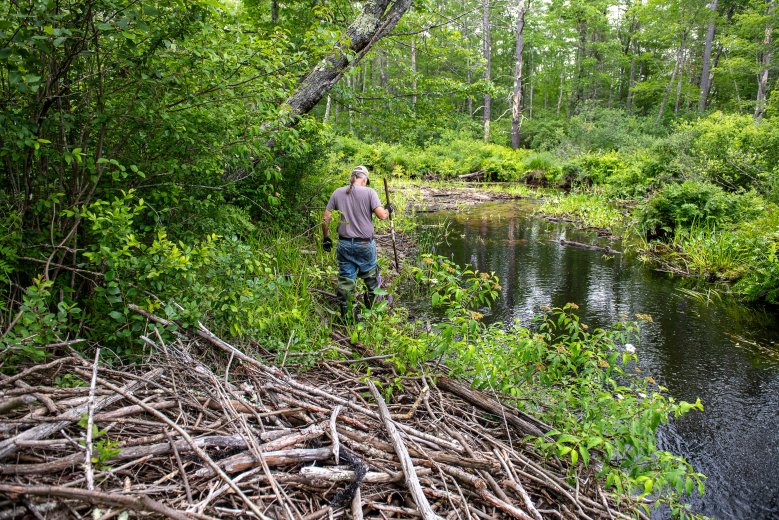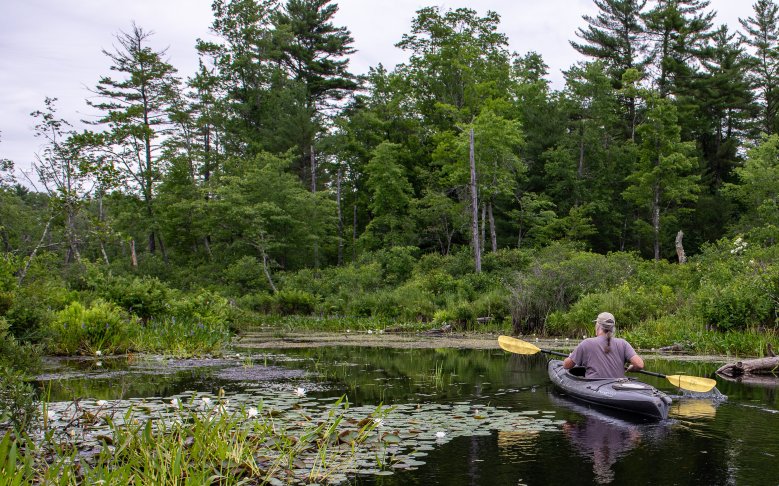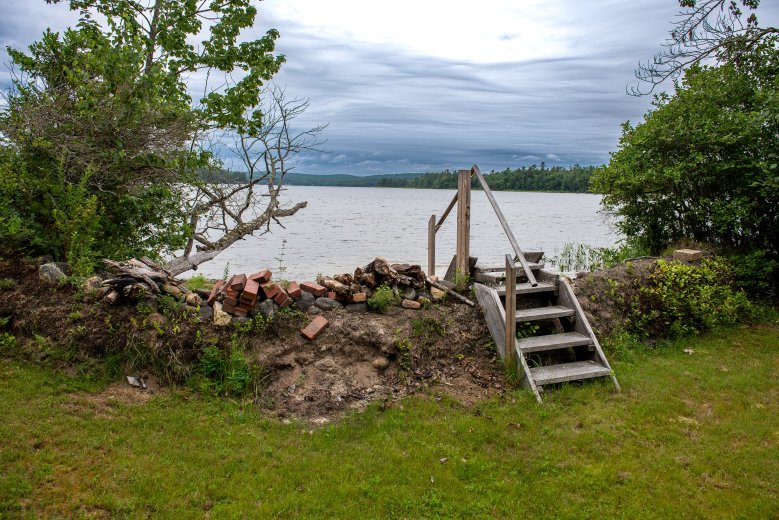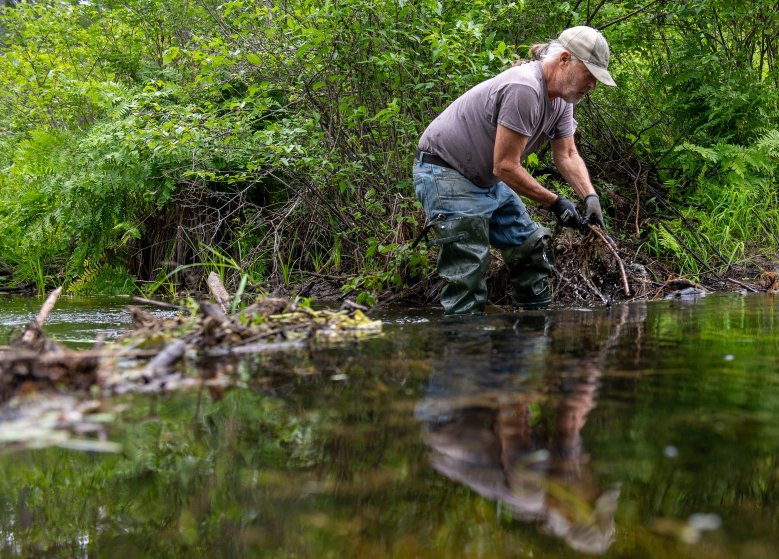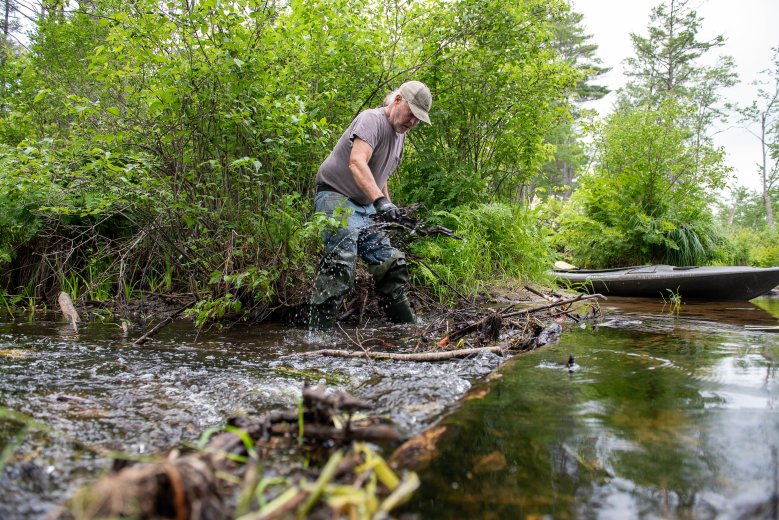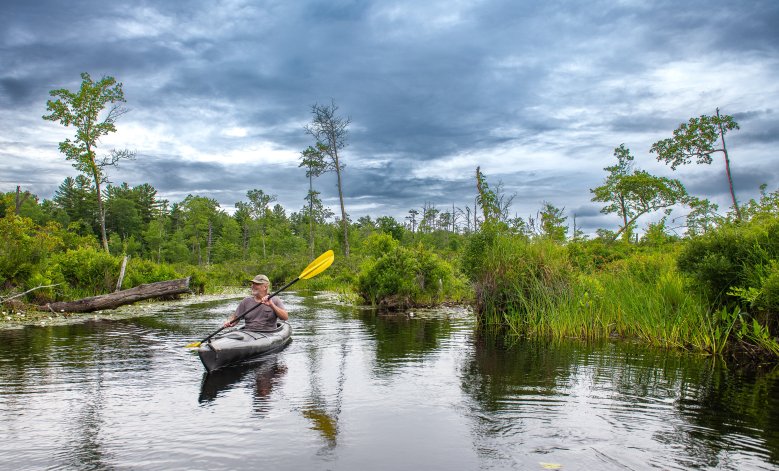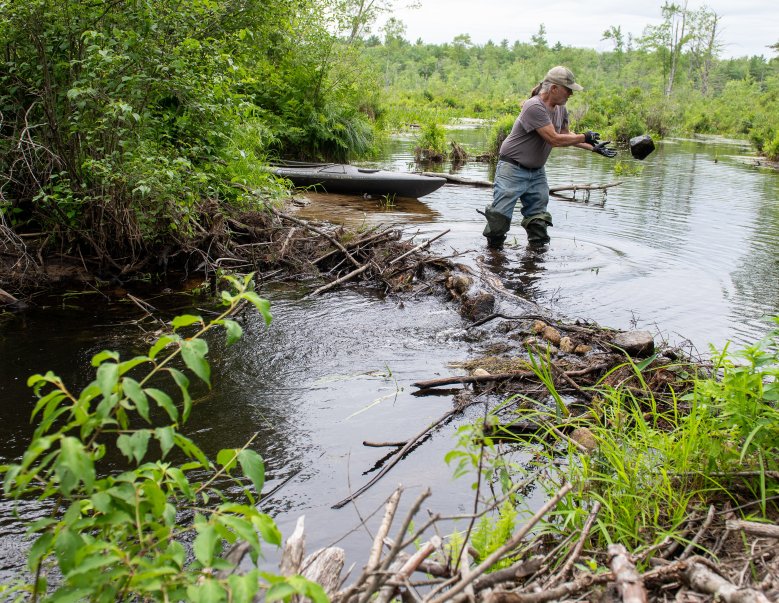
POLAND — There is now evidence that a multiyear effort to raise the water level on Tripp Pond is the work of humans, not beavers as some had argued.
Surveillance photos taken July 3 and again July 9 show two men in an aluminum boat appearing to work on an artificial dam at the Winterbrook outlet on Tripp Pond, also known as Tripp Lake.
The photos are the clearest evidence yet that people are manipulating the water flow in Tripp Pond, a subject that has deeply divided the lake’s community.
In an email statement Wednesday, the property owner, Montreal-based Kruger Energy Inc., wrote, “Kruger has not authorized anyone to access its property or engage in any illegal activities. We have notified the appropriate authorities regarding this situation. Kruger stands firm in its position that no actions — such as diverting flows or utilizing our property — will be allowed until a formal process is set in motion.”

The photos were taken with Kruger’s permission and shared with the Sun Journal. The men did not have permission from the property owner to be there nor to add fill to the outlet, which requires a state permit.
In the photos, the men are seen adding branches, mud and rocks to the outlet from a boat that has no visible registration, which is a legal requirement in Maine. What appears to be the same boat was later tracked to a private dock on the pond and the driver of the boat was recorded operating another boat docked at the same location.
In response to an email to the Maine Department of Environmental Protection asking for more information, Deputy Commissioner David Madore sent a reply on Tuesday.
“The Department is aware of allegations that fill material has been placed in the Tripp Lake outlet stream and has authorized the landowner to remove such material,” Madore said. “DEP personnel will continue to investigate complaints and provide guidance on statutory requirements in coordination with other state agencies.”
So far, no state agency has been to the site to inspect.

Jeff Hughes is among a growing cadre of residents and owners who have been monitoring and advocating for the lake’s health. The group would also like to see a resolution to the back-and-forth in the community over lake water levels.
While some on Tripp Pond have said the water level has been too low and requires intervention, others say that abnormally high levels in recent years have damaged property, erased beaches and left them unable to put in docks.
Hughes has a 30-year background in conservation and experience working with state and federal agencies in Massachusetts, where he was a herring warden for the town of Wellfleet on Cape Cod for more than a decade.
Hughes received authorization from the DEP and Kruger Energy to remove the fill and debris added by the two unidentified men. Hughes was told only to remove what was added by the perpetrators, nothing more.
Over the course of an hour, the Sun Journal recorded him pulling more than 60 substantial-sized rocks from the artificial dam that were layered on top of sticks and debris to hold it all in place. Hughes said there is a second layer of rocks remaining in the outlet. The sticks were old and brittle and clearly had been dried out for some time, as they easily snapped in two.
Hughes pointed out that beavers normally use freshly cut branches and small trees because they are pliable and easily maneuvered.
Beavers have inhabited Tripp Pond and its tributaries and wetlands well before man settled the area and are mentioned in an 1890 “History of Poland,” by Poole Brothers Publishing.
According to landowners, a beaver lodge dating back seven to eight years ago blocked the Winterbrook outlet, which is the only outlet from Tripp Pond.
However, the beavers were removed under the supervision of a state wildlife biologist with the Maine Department of Inland Fisheries and Wildlife between October and December of 2022 and the dam was removed and dismantled to allow the free flow of water.
There was severe flooding in 2022 and 2023 from high water levels that damaged at least a dozen properties with an estimated cost of over $100,000 to repair. Septic systems were also put at risk by the high water.
Insisting the lake’s water level was “dangerously low,” the Tripp Lake Improvement Association took matters into its own hands in June 2023, installing bright yellow bladders in the stream, blocking the outlet and raising the lake’s water level.
The association was granted consent to install the bladders by the DEP, but that permission was soon rescinded when the department learned that information provided by the group for consent was erroneous. The group was ordered to immediately remove the bladders and was later issued a letter of warning by the agency.
Last July, a structure appeared at the Winterbrook outlet again, but Hughes suspected it was a beaver dam analog — a structure designed to mimic beaver activity and attract them, used primarily in western states where beavers were hunted and trapped nearly into extinction.

The Maine DEP and the Department of Inland Fisheries and Wildlife dismissed the notion because beaver analogs are not used in Maine.
A joint letter to the community signed by senior leaders with the Maine DEP and Inland Fisheries and Wildlife pledged they would take no further action at Tripp Pond unless beavers or their dam caused further property damage, and called on the community to come to a consensus on water levels — a prospect that remains elusive in 2025.
Kruger Energy, in its statement regarding the people caught on the surveillance camera, said the process must involve all relevant stakeholders, including resource agencies, landowners, and community representatives, to ensure a collaborative outcome.
“Our commitment to environmental stewardship highlights the necessity of a thorough assessment to minimize any potential impacts. We recognize that balancing community interests with environmental responsibilities and regulatory compliance is complex.
“Our experience has taught us that engaging all parties are crucial for achieving sustainable results. For all these reasons, any proposal must be thoroughly assessed. To that end, we have suggested establishing a structured consultation process that includes an environmental impact assessment, input from ecological experts, and clear documentation of agreements.
“This strategy aligns with our practices and emphasizes collaboration among stakeholders. We are committed to working with all parties involved to develop a proposal that serves the community while upholding our environmental and operational standards.”

